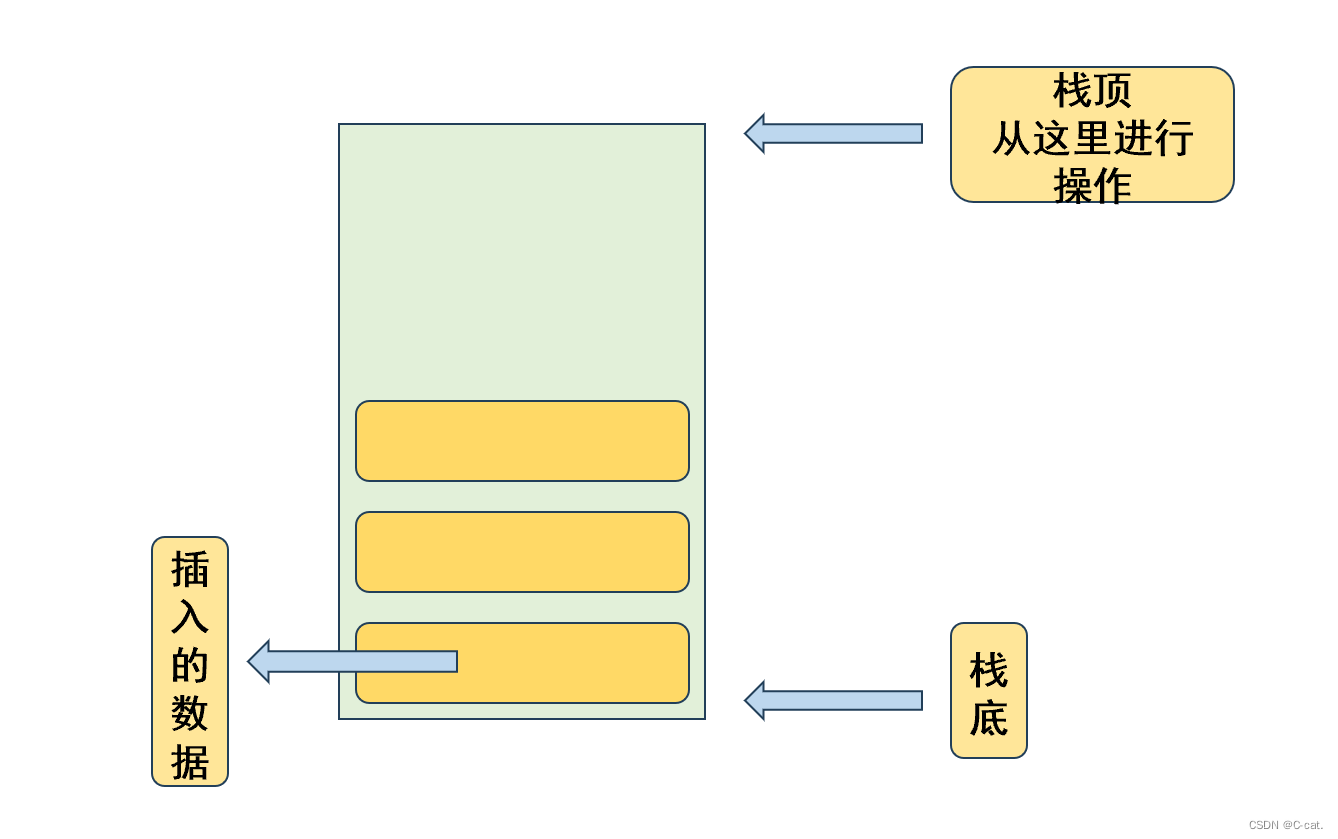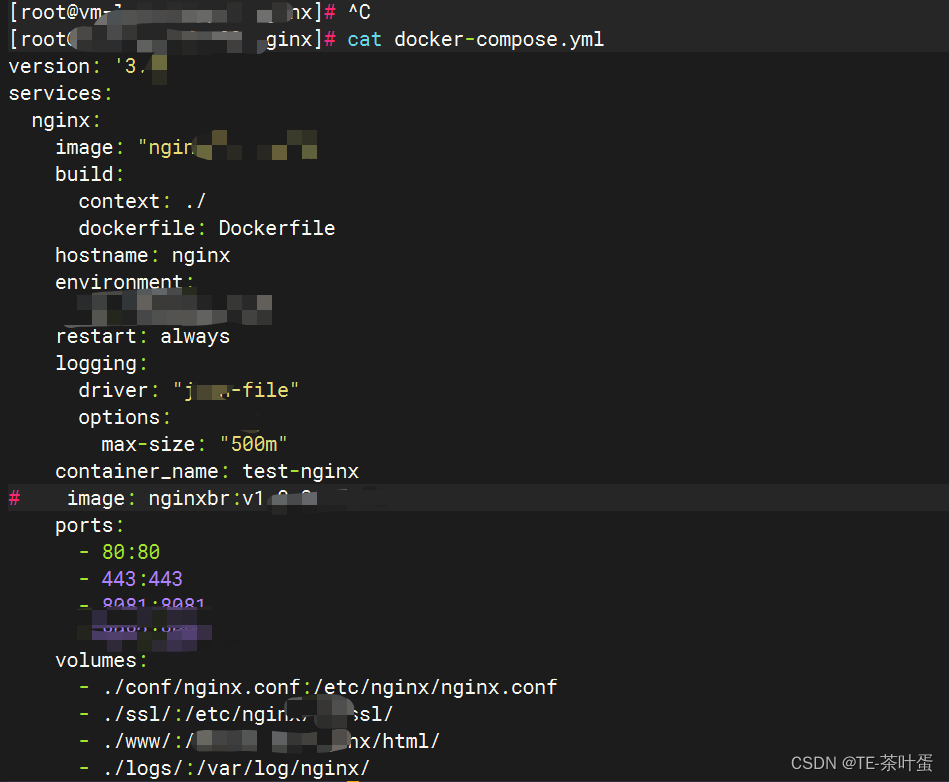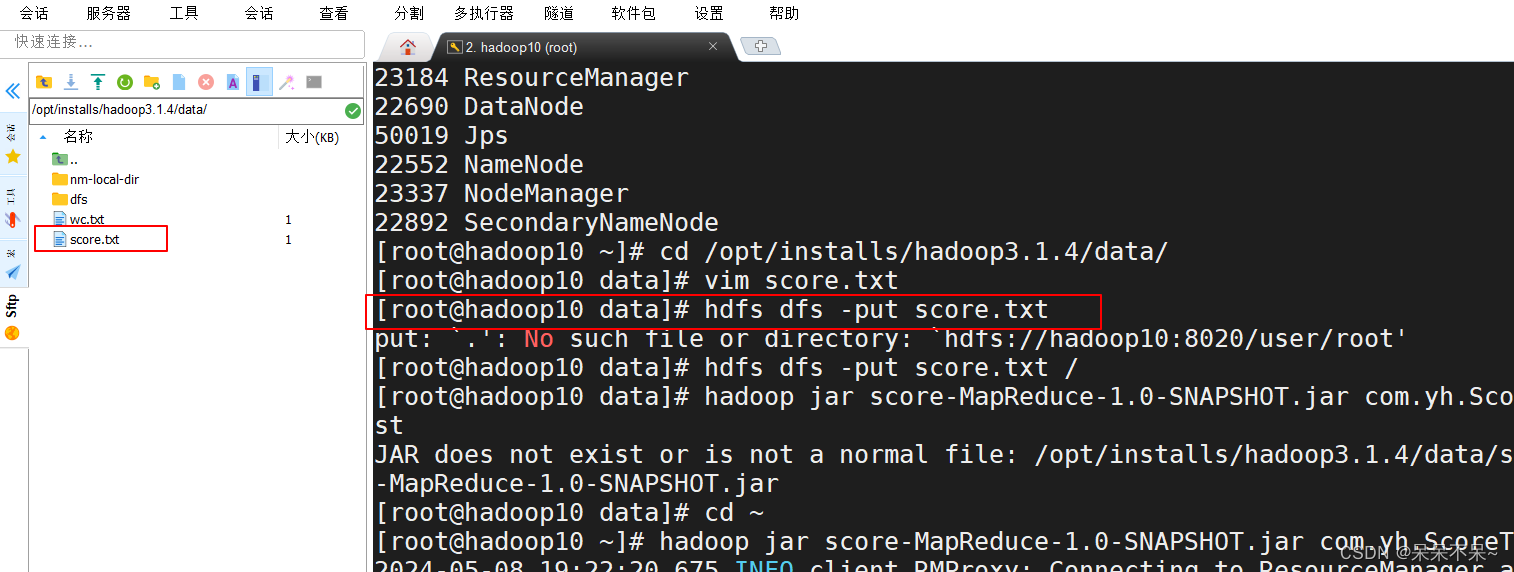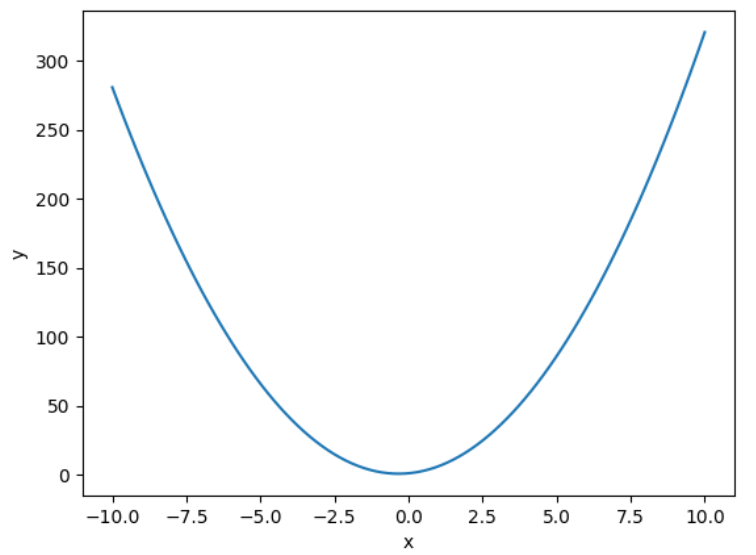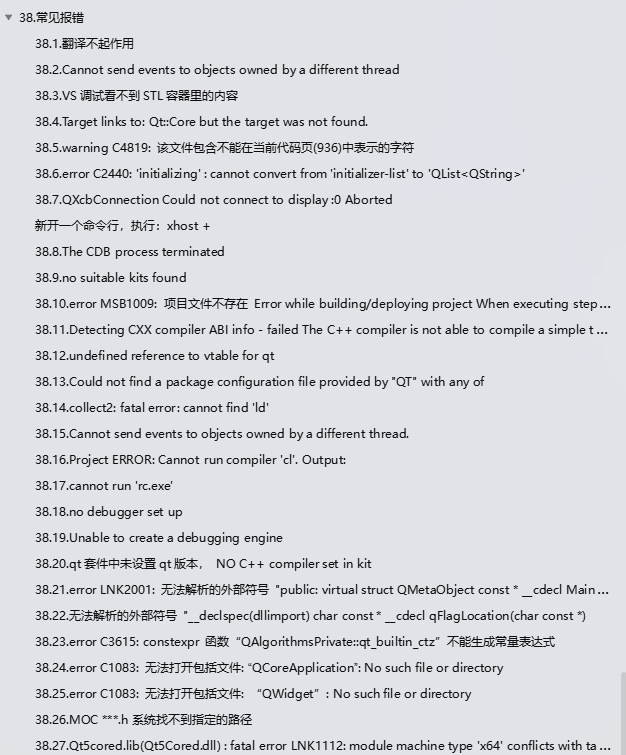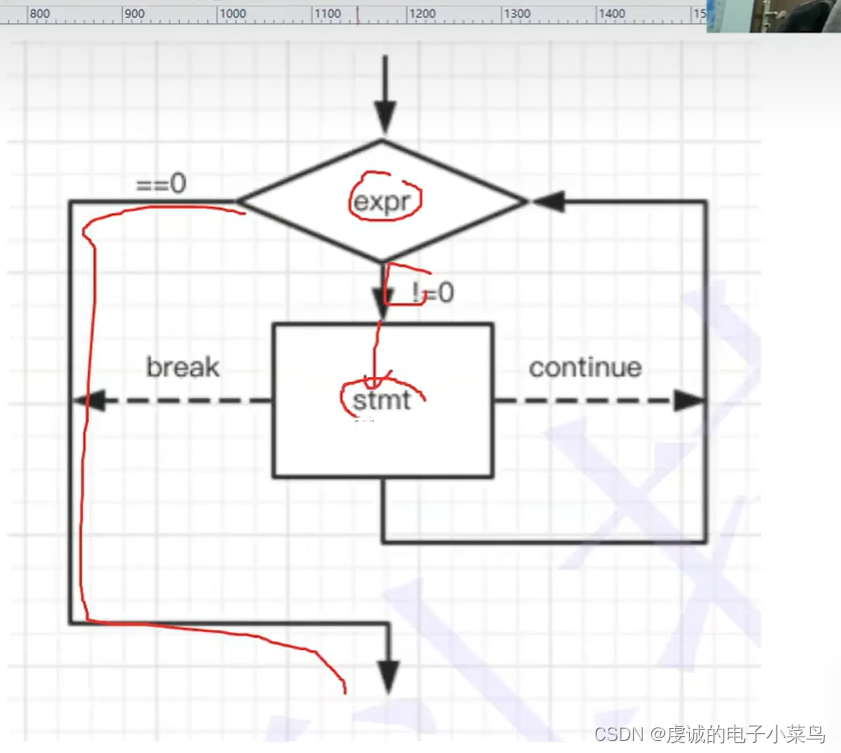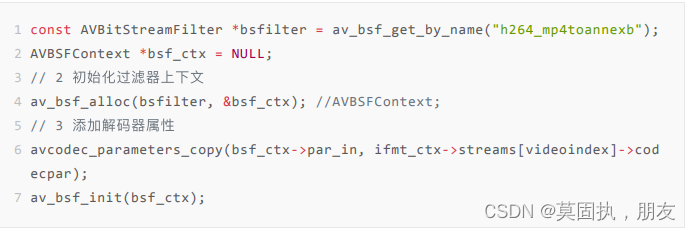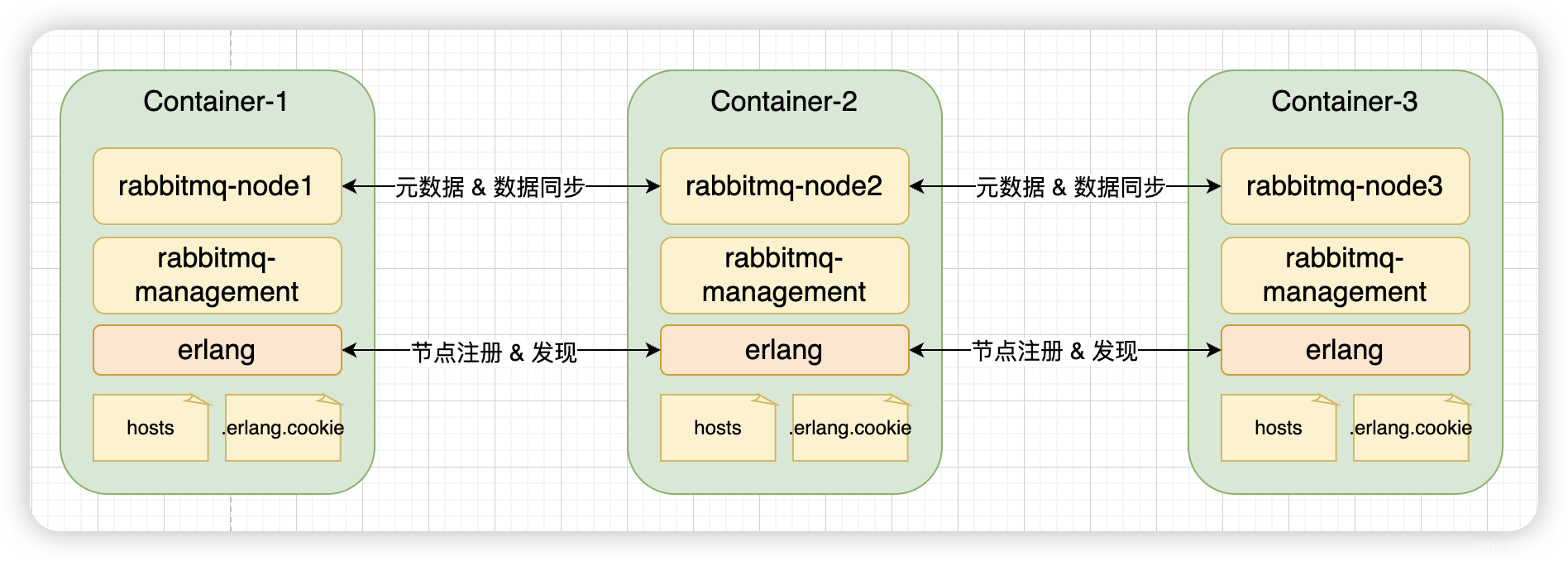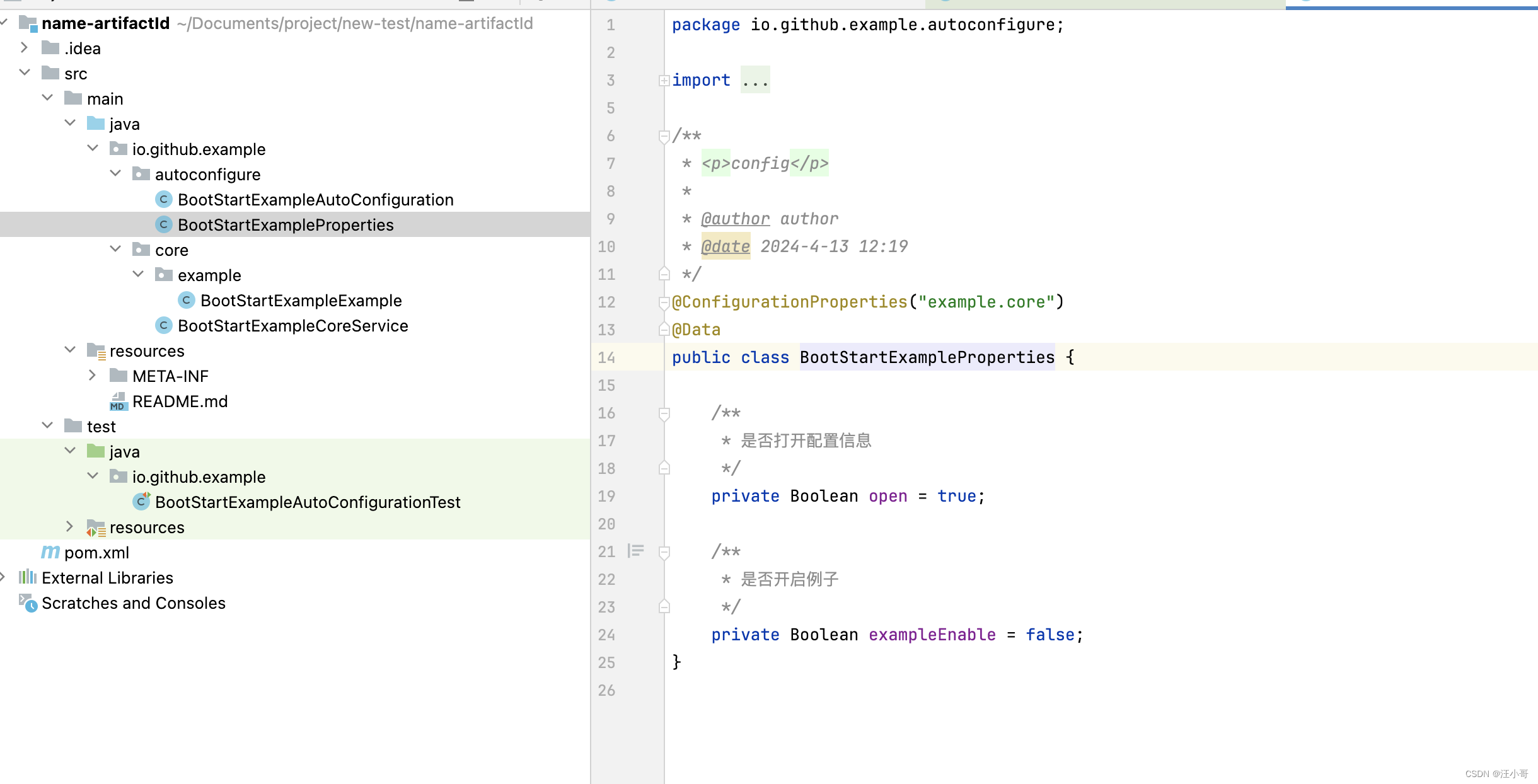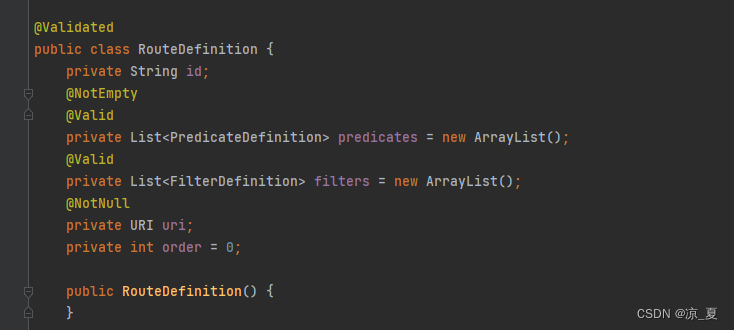基本视频/图像数据格式
参考:
- 雷霄骅博士博客:
- http://t.csdnimg.cn/kl2jL
- http://t.csdnimg.cn/pMLLE
- http://t.csdnimg.cn/FjtOK
- http://t.csdnimg.cn/K95yN
- ffmpeg-7.0中/test/utils.c文件
1.概述
视频/图像数据格式作为视频/图像处理的对象,是整个视频图像处理体系的最基本单元,有必要熟悉其存储格式。主要视频图像数据格式有yuv420p,yuv422p,yuv444p,bmp和rgb24等,其中视频编码器的主要输入数据格式就是yuv420p,因为这种格式存储数据量很小,易于存储。
视频图像处理体系大致可以分为几层:
- 协议层(http、rtmp、file…)
- 封装层(mkv,mp4,flv,mpegts,avi…)
- 编解码层(h264,h265,mpeg2…)
- 像素层(yuv420p,yuv422p,yuv444p,rgb24…)
这里仅关注像素层(视频图像的主要组成部分)的数据格式。
2.视频图像数据格式
2.1 yuv420p
最常见的视频编码数据格式,yuv420p格式中,p的含义是planar,即平面存储。存储时分为三个分量Y、U和V,即在内存当中存储时先存储Y,后存储U,最后V。如果是420p格式,U和V分量的数据大小均为Y分量的1/4,这是因为U和V分量的width和height均为Y分量的1/2。
在内存中,YUV420P的存储方式为:Y0 Y1 Y2 … U0 U1 U2 … V0 V1 V2 …,并且Y的长度分别为U和V分量的4倍。如果不是p格式,可能存储的方式是interleave,即交叉式存储,这里不讨论。YUV420p格式的数据,其读取和写入数据的方式为
int video_yuv420_split(char *url, int w, int h, int num){
FILE *fp = fopen(url, "rb+");
FILE *fp_y = fopen("output_420_y.y", "wb+");
FILE *fp_u = fopen("output_420_u.y", "wb+");
FILE *fp_v = fopen("output_420_v.y", "wb+");
// 3/2 = 1(Y) + 1/4(U) + 1/4(V)
unsigned char *pic = (unsigned char *) mallo c(w * h * 3/2);
for(int i = 0; i < num; i++){
fread(pic, 1, w * h * 3/2, fp); // Read YUV data from .yuv file
fwrite(pic, 1, w * h, fp_y); // Write Y component into fp_y
fwrite(pic + w * h, 1, w * h / 4, fp_u); // Write U component into fp_u
fwrite(pic + w * h * 5 / 4, 1, w * h / 4, fp_v);// Write V component into fp_v
}
free(pic);
fclose(fp);
fclose(fp_y);
fclose(fp_u);
fclose(fp_v);
return 0;
}
2.2 yuv422p
与yuv420p类似,区别在于U和V分量的比例不同。yuv422p格式当中,仍然是先存储Y分量,后存储U分量,最后是V分量。但是U和V分量的大小分别是Y分量的一半,例如 Y0 Y1 Y2 Y3 U0 U1 V0 V1。读写方式和yuv420p的区别在于
unsigned char *pic = (unsigned char *) malloc (w * h * 2);
for(int i = 0; i < num; i++){
fread(pic, 1, w * h * 2, fp); // Read YUV data from .yuv file
fwrite(pic, 1, w * h, fp_y); // Write Y component into fp_y
fwrite(pic + w * h, 1, w * h / 2, fp_u); // Write U component into fp_u
fwrite(pic + w * h * 3 / 2, 1, w * h / 2, fp_v);// Write V component into fp_v
}
2.3 yuv444p
yuv444p格式中,YUV三个分量的大小相同,例如 Y0 Y1 Y2 Y3 U0 U1 U2 U3 V0 V1 V2 V3。读写方式为
unsigned char *pic = (unsigned char *) malloc (w * h * 3);
for(int i = 0; i < num; i++){
fread(pic, 1, w * h * 3, fp); // Read YUV data from .yuv file
fwrite(pic, 1, w * h, fp_y); // Write Y component into fp_y
fwrite(pic + w * h, 1, w * h, fp_u); // Write U component into fp_u
fwrite(pic + w * h * 2, 1, w * h, fp_v); // Write V component into fp_v
}
2.4 RGB格式
对于后缀为.rgb格式的文件,其存储数据的方式与yuv不同。在YUV格式当中,YUV三个通道是分别进行存储,而RGB格式是三个通道交替进行存储,例如 r0 g0 b0 r1 g1 b1 r2 g2 b2…,因此其读写数据的方式也不同。
unsigned char *pic = (unsigned char *) malloc (w * h * 3);
for(int i = 0; i < num; i++){
fread(pic, 1, w * h * 3, fp); // read .rgb file
for(int j = 0; j < w * h * 3; j = j + 3){
fwrite(pic + j, 1, 1, fp_y); // write r component
fwrite(pic + j + 1, 1, 1, fp_u); // write g component
fwrite(pic + j + 2 , 1, 1, fp_v); // write b component
}
常见的8种颜色RGB数值为
| 颜色 | RGB |
|---|---|
| 白 | (255, 255, 255) |
| 黄 | (255, 255, 0) |
| 青 | (0, 255, 255) |
| 绿 | ( 0, 255, 0) |
| 品红 | (255, 0, 255) |
| 红 | (255, 0, 0) |
| 蓝 | (0, 0, 255) |
| 黑 | (0, 0, 0) |
另外,灰色为128
2.5 BMP格式
BMP格式是对RGB进行封装得到的格式,能够使用普通的图片浏览器打开。对RGB格式进行封装得到BMP格式的方式如下:
/**
1. Convert RGB24 file to BMP file
2. @param rgb24path Location of input RGB file.
3. @param width Width of input RGB file.
4. @param height Height of input RGB file.
5. @param url_out Location of Output BMP file.
*/
int video_rgb24_to_bmp(const char *rgb24path,int width,int height,const char *bmppath){
typedef struct
{
long imageSize;
long blank;
long startPosition;
}BmpHead;
typedef struct
{
long Length;
long width;
long height;
unsigned short colorPlane;
unsigned short bitColor;
long zipFormat;
long realSize;
long xPels;
long yPels;
long colorUse;
long colorImportant;
}InfoHead;
int i = 0;
int j = 0;
BmpHead m_BMPHeader = { 0 };
InfoHead m_BMPInfoHeader = { 0 };
char bfType[2] = {'B', 'M'};
int header_size = sizeof(bfType) + sizeof(BmpHead) + sizeof(InfoHead);
unsigned char *rgb24_buffer = NULL;
FILE* fp_rgb24 = NULL;
FILE* fp_bmp = NULL;
if((fp_rgb24 = fopen(rgb24path, "rb")) == NULL){
printf("Error: Cannot open input RGB24 file.\n");
return -1;
}
if((fp_bmp = fopen(bmppath, "wb")) == NULL){
printf("Error: Cannot open output BMP file.\n");
return -1;
}
rgb24_buffer = (unsigned char *)malloc(width * height * 3);
fread(rgb24_buffer, 1, width * height * 3, fp_rgb24);
m_BMPHeader.imageSize = 3 * width * height + header_size;
m_BMPHeader.startPosition = header_size;
m_BMPInfoHeader.Length = sizeof(InfoHead);
m_BMPInfoHeader.width = width;
//BMP storage pixel data in opposite direction of Y-axis (from bottom to top).
m_BMPInfoHeader.height =- height;
m_BMPInfoHeader.colorPlane = 1;
m_BMPInfoHeader.bitColor = 24;
m_BMPInfoHeader.realSize = 3 * width * height;
fwrite(bfType, 1, sizeof(bfType), fp_bmp);
fwrite(&m_BMPHeader, 1, sizeof(m_BMPHeader), fp_bmp);
fwrite(&m_BMPInfoHeader, 1, sizeof(m_BMPInfoHeader), fp_bmp);
//BMP save R1|G1|B1,R2|G2|B2 as B1|G1|R1,B2|G2|R2
//It saves pixel data in Little Endian
//So we change 'R' and 'B'
for(j = 0; j < height; j++){
for(i = 0; i < width; i++){
// 将R分量和B分量的位置进行交换
char temp = rgb24_buffer[(j * width + i) * 3 + 2];
rgb24_buffer[(j * width + i) * 3 + 2] = rgb24_buffer[(j * width + i) * 3 + 0];
rgb24_buffer[(j * width + i) * 3 + 0] = temp;
}
}
fwrite(rgb24_buffer, 3 * width * height, 1, fp_bmp);
fclose(fp_rgb24);
fclose(fp_bmp);
free(rgb24_buffer);
printf("Finish generate %s!\n", bmppath);
return 0;
}
在这里,代码执行的任务包括:
- 存储写上BMP的头部信息
- 将RGB格式的文件修改为BGR。这是因为BMP存储时使用的是小端存储(Little Endian),存储时的顺序为B、G、R
BMP文件是由BITMAPFILEHEADER、BITMAPINFOHEADER、RGB像素数据共3个部分构成,如下所示。其中,BITMAPFILEHEADER对应上述的BmpHead,BITMAPINFOHEADER对应上述的InfoHead。
typedef struct tagBITMAPFILEHEADER
{
unsigned short int bfType; //位图文件的类型,必须为BM
unsigned long bfSize; //文件大小,以字节为单位
unsigned short int bfReserverd1; //位图文件保留字,必须为0
unsigned short int bfReserverd2; //位图文件保留字,必须为0
unsigned long bfbfOffBits; //位图文件头到数据的偏移量,以字节为单位
}BITMAPFILEHEADER;
typedef struct tagBITMAPINFOHEADER
{
long biSize; //该结构大小,字节为单位
long biWidth; //图形宽度以象素为单位
long biHeight; //图形高度以象素为单位
short int biPlanes; //目标设备的级别,必须为1
short int biBitcount; //颜色深度,每个象素所需要的位数
short int biCompression; //位图的压缩类型
long biSizeImage; //位图的大小,以字节为单位
long biXPelsPermeter; //位图水平分辨率,每米像素数
long biYPelsPermeter; //位图垂直分辨率,每米像素数
long biClrUsed; //位图实际使用的颜色表中的颜色数
long biClrImportant; //位图显示过程中重要的颜色数
}BITMAPINFOHEADER;
3.格式转换
3.1 RGB24转换为YUV420P
RGB24转换YUV420p的公式为:
Y = 0.299 * R + 0.587 * G + 0.114 * B
U =-0.147 * R - 0.289 * G + 0.463 * B
V = 0.615 * R - 0.515 * G - 0.100 * B
代码参考ffmpeg-7.0当中的/test/utils.c,这个文档相比雷霄骅博士的写法有所不同,或许更好理解。
#define SCALEBITS 8
#define ONE_HALF (1 << (SCALEBITS - 1))
#define FIX(x) ((int) ((x) * (1 << SCALEBITS) + 0.5)) // 乘以255倍,猜测目的应该是提升精度
#define err_if(expr) do { \
if (expr) { \
fprintf(stderr, "%s\n", strerror(errno)); \
exit(1); \
} \
} while (0)
static void rgb24_to_yuv420p(unsigned char *lum, unsigned char *cb, // lum是Y分量的地址,cb是U分量的地址
unsigned char *cr, const unsigned char *src, // cr是V分量的地址
int width, int height)
{
int wrap, wrap3, x, y;
int r, g, b, r1, g1, b1;
const unsigned char *p;
wrap = width; // yuv指针偏移量,用于定位图像每一行的宽度
wrap3 = width * 3; // rgb指针偏移量,用于定位图像每一行的宽度
p = src; // src为rgb图像的指针地址
// 这里每2x2个像素进行处理,是因为U和V分量的长和宽分别只占据Y分量的1/2
for (y = 0; y < height; y += 2) {
for (x = 0; x < width; x += 2) {
r = p[0];
g = p[1];
b = p[2];
r1 = r;
g1 = g;
b1 = b;
lum[0] = (FIX(0.29900) * r + FIX(0.58700) * g +
FIX(0.11400) * b + ONE_HALF) >> SCALEBITS;
r = p[3];
g = p[4];
b = p[5];
r1 += r;
g1 += g;
b1 += b;
lum[1] = (FIX(0.29900) * r + FIX(0.58700) * g +
FIX(0.11400) * b + ONE_HALF) >> SCALEBITS;
p += wrap3; // 移动到当前2x2小块的左下小块
lum += wrap; // 移动到当前2x2小块的左下小块
r = p[0];
g = p[1];
b = p[2];
r1 += r;
g1 += g;
b1 += b;
lum[0] = (FIX(0.29900) * r + FIX(0.58700) * g +
FIX(0.11400) * b + ONE_HALF) >> SCALEBITS;
r = p[3];
g = p[4];
b = p[5];
r1 += r;
g1 += g;
b1 += b;
lum[1] = (FIX(0.29900) * r + FIX(0.58700) * g +
FIX(0.11400) * b + ONE_HALF) >> SCALEBITS;
// 每2x2个像素有一个Cb和Cr分量,将其写入到cb和cr数组当中
cb[0] = ((- FIX(0.16874) * r1 - FIX(0.33126) * g1 +
FIX(0.50000) * b1 + 4 * ONE_HALF - 1) >> (SCALEBITS + 2)) + 128;
cr[0] = ((FIX(0.50000) * r1 - FIX(0.41869) * g1 -
FIX(0.08131) * b1 + 4 * ONE_HALF - 1) >> (SCALEBITS + 2)) + 128;
cb++;
cr++;
p += -wrap3 + 2 * 3; // 乘以3是因为rgb是顺序存储的,移动到下一个2x2小块左上小块的r分量
lum += -wrap + 2; // 回到上一行的起始位置,加2则指向下一个2x2小块的左上小块
}
p += wrap3;
lum += wrap;
}
}
static void pgmyuv_save(const char *filename, int w, int h,
const unsigned char *rgb_tab)
{
FILE *f;
int i, h2, w2;
unsigned char *cb, *cr;
unsigned char *lum_tab, *cb_tab, *cr_tab;
lum_tab = malloc(w * h);
cb_tab = malloc(w * h / 4);
cr_tab = malloc(w * h / 4);
rgb24_to_yuv420p(lum_tab, cb_tab, cr_tab, rgb_tab, w, h);
if (filename) {
f = fopen(filename, "wb");
fprintf(f, "P5\n%d %d\n%d\n", w, h * 3 / 2, 255);
} else {
f = stdout;
}
err_if(fwrite(lum_tab, 1, w * h, f) != w * h); // 写入Y分量
h2 = h / 2;
w2 = w / 2;
cb = cb_tab;
cr = cr_tab;
if (filename) {
for (i = 0; i < h2; i++) {
err_if(fwrite(cb, 1, w2, f) != w2); // 写入U分量
err_if(fwrite(cr, 1, w2, f) != w2); // 写入V分量
cb += w2;
cr += w2;
}
fclose(f);
} else {
for (i = 0; i < h2; i++) {
err_if(fwrite(cb, 1, w2, f) != w2);
cb += w2;
}
for (i = 0; i < h2; i++) {
err_if(fwrite(cr, 1, w2, f) != w2);
cr += w2;
}
}
free(lum_tab);
free(cb_tab);
free(cr_tab);
}
4.视频图像评价指标
4.1 MSE
MSE全称为Mean Square Error,表示均方误差,其计算方式为
int width = WIDTH;
int height = HEIGHT;
double mse = 0.0;
for(int j = 0; j < width * height; j++){
mse += pow((double)(src[j] - dst[j]), 2);
}
mse = mse / (width * height);
4.2 PSNR
PSNR的计算是在MSE计算的基础之上获得的,计算方式为
double psnr = 0.0;
psnr = 10 * log10(255.0 * 255.0 / mse);
PSNR描述了两幅图片的差异程度,单位是dB,dB越大,表示两幅图像越接近,否则差异越大。在视频编码标准中,PSNR是衡量编码工具的重要指标,通常与Bitrate结合起来,来评判编码算法的优劣。
CSDN:https://blog.csdn.net/weixin_42877471
Github:https://github.com/DoFulangChen























